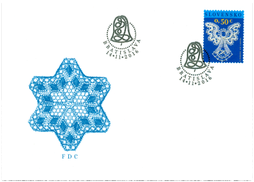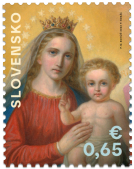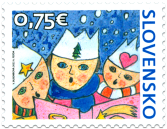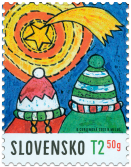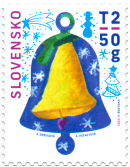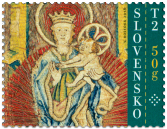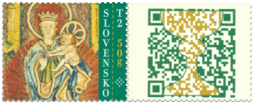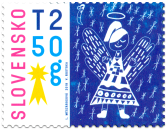625 Date of issue
14.11.2016 Face value
0.50 € Sell price
0.50 €
Angels are a traditional part of the Christmas story about the birth of Jesus Christ which has been commemorated every year on December 25 by Christian churches since the 4th century. The servants of the Heavenly God and guardians of all men at the same time played important roles in this biblical story. An angel announced to the Virgin Mary that she was going to give birth to God’s son Jesus. Sleeping Joseph also learned about the birth of son from an angel in a dream. The birth of the Messiah was heralded to the shepherds by an angel that has been a character in folk nativity plays and particularly a part of the nativity scene – in paintings or in statuettes and sculptures depicting the story of Christ’s birth. In this story, an angel – similar to the one on the stamp – hovers over the whole scene. In folk traditions, angels are also considered to be helpers of the Baby Jesus who gives gift to children on Christmas Eve. Statuettes of angels can be also seen as Christmas tree decorations. Christmas decorations made from bobbin lace started around the 1990s. According to written records and archaeological findings, laces made of golden and silver threads as well as cotton and linen laces have been used in Slovakia since the beginning of the 16th century. In the oldest and largest lace centres, which were the mining settlements around Banská Štiavnica, Banská Bystrica, Kremnica and Prešov, bobbin lacemaking was probably already spreading in the second half of the 16th century. Over more than four centuries, elements of German, Italian, Belgian, and Czech bobbin lacemaking traditions were incorporated into Slovak bobbin lacemaking. For this reason, Slovak bobbin laces combine elements of both Western and Eastern Europe and their diversity in this rather small territory is unique in the world. The motif of an angel depicted on the postage stamp is an example of the new forms that Slovak bobbin lacemaking has been taking up to this day. It was created by a Slovak lace maker who was inspired by a model from Czech Republic.
Juraj Zajonc
© 2024 POFIS - Postal philatelic service. All rights reserved




